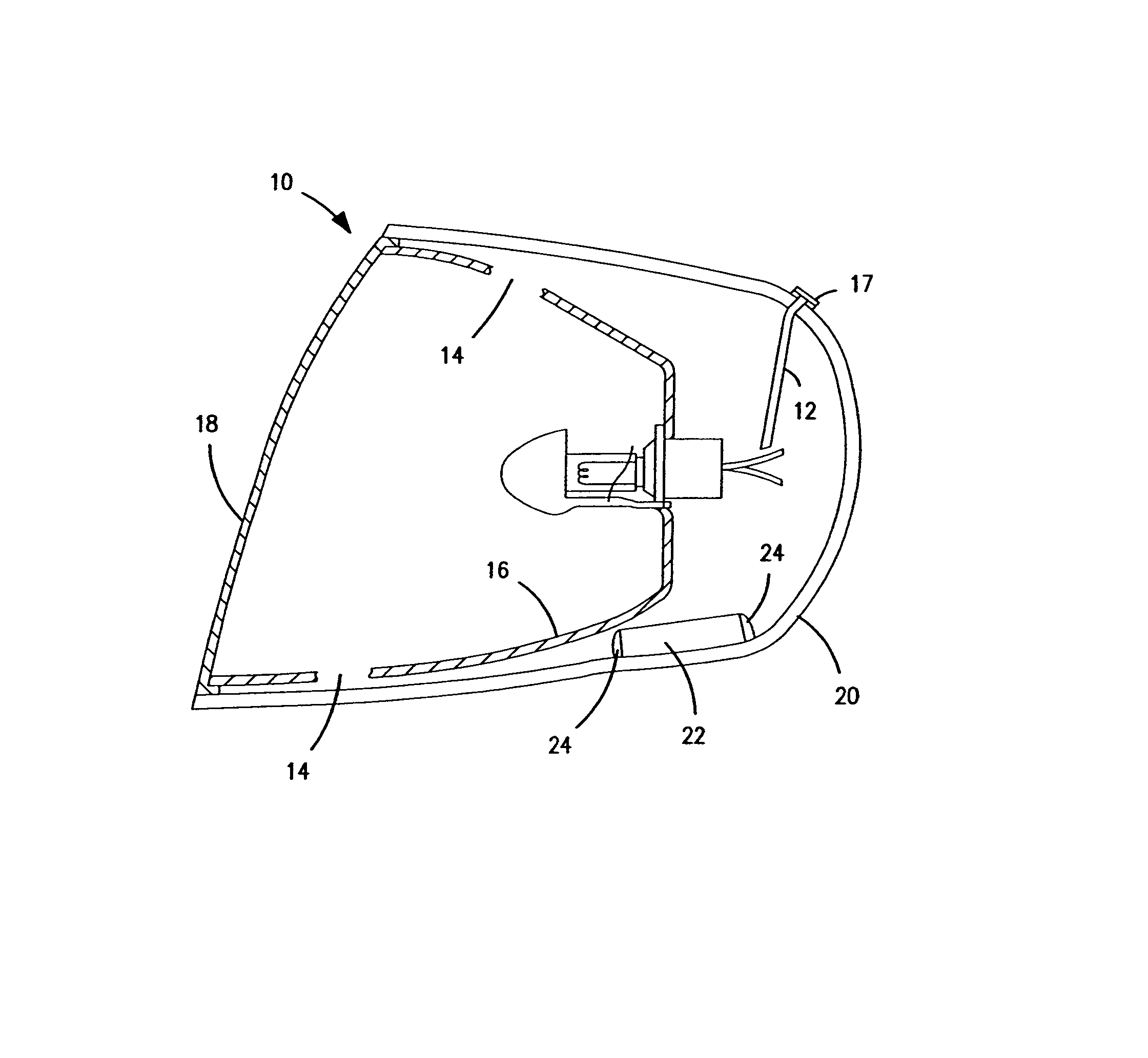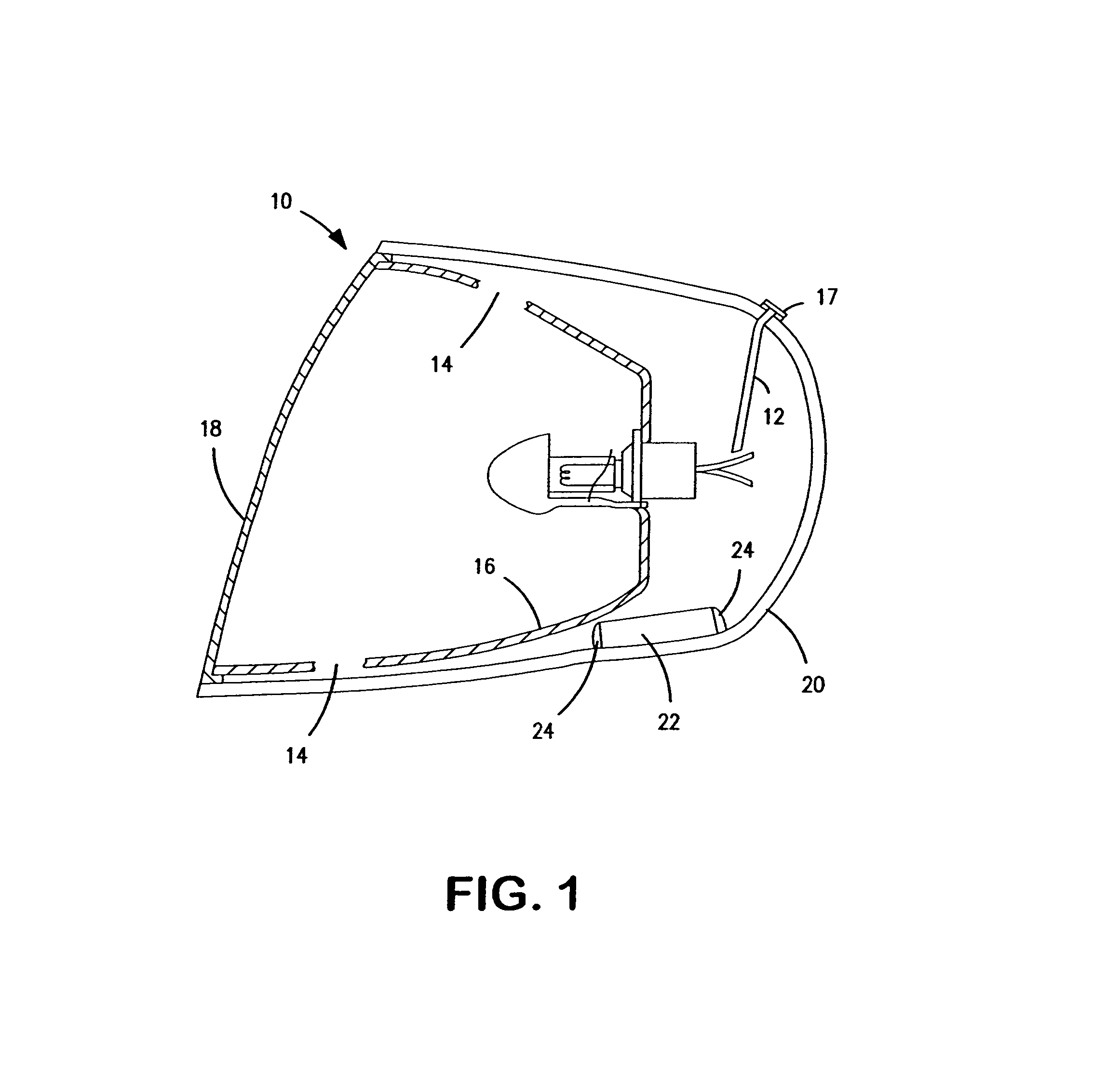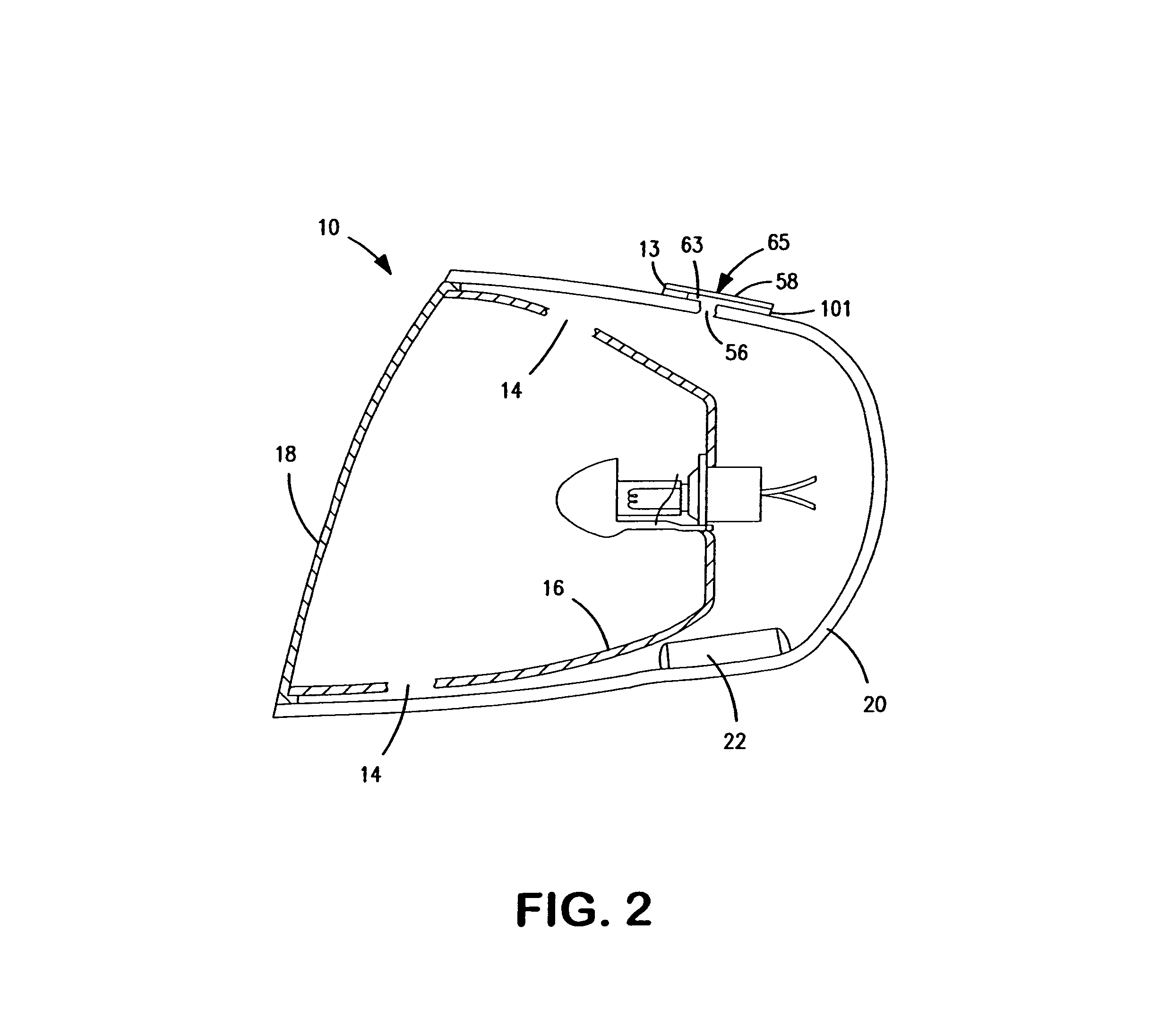Venting system for minimizing condensation in a lighting assembly
a technology for lighting assemblies and ventilation systems, which is applied in the direction of lighting and heating equipment, transportation and packaging, separation processes, etc., can solve the problems of reducing affecting the service life of lighting assemblies, etc., to achieve the effect of reducing condensation, high capacity and high capacity
- Summary
- Abstract
- Description
- Claims
- Application Information
AI Technical Summary
Benefits of technology
Problems solved by technology
Method used
Image
Examples
example 1
[0060]A lamp housing according to the present invention was produced using the housing of a model year 2004 Saturn Ion2. Both adhesive vents were removed. The original housing included two vents, one inboard and one outboard. The out board vent hole was sealed Dow Corning RTV 832.
[0061]A diffusion tube was installed through the inboard vent hole. A 100 mm long, 1.6 mm OD, 0.75 mm ID Stainless Steel tube was sealed into the inboard vent hole using RTV 832. A 6.3 mm tall Delrin vent stand off, having a 12.7 mm OD and 7.6 mm ID was attached over the top of the tube using the RTV 832. An OLEOGARD® adhesive vent manufactured by W.L. Gore & Associates of Elkton, Md., part number VE0004WAG was placed on top of the standoff to prevent contamination or clogging of the diffusion tube.
[0062]A high capacity, nonregenerating desiccant was placed in a container and installed in the housing. A ten gram mixture of 44% MgCl2 and 56% MgO was prepared and immediately placed into an 8″ ePTFE tube. The ...
example 2
[0064]A second lamp housing according to the present invention was produced from a 2002 Volvo HID headlamp. All original vents were removed and the holes were sealed with RTV 832.
[0065]A moisture reducing device was installed in the housing. The device consisted of a stamped stainless steel cup (20 mm OD×6.5 mm height) with a 0.5 mm vent hole in the bottom, manufactured by Auto-Form, Inc., Waterbury, Conn. A stainless steel tube (0.75 mm ID×1.5 mm OD×125 mm L) was soldered into the bottom of the cup. The cup was filled with about 0.600 grams (±0.005 g) of Type B silica desiccant manufactured by Kaltron Inc. (Kaltron / Pettibone) of Bensenville, Ill., part number Sil 66300. To contain the desiccant, the cup was covered by a silicone rubber imbibed ePTFE Membrane prepared in the following manner:
[0066]A roll of tensilized polytetrafluoroethylene (PTFE) tape, manufacture by DeWal Industries of Sanderstown, R.I., part number 220T, that is approximately 20 cm wide is placed on the payoff o...
example 3
[0070]A housing was assembled using a modified enclosure from a model year 2000 Chevy Silverado in which all original housing vents were sealed with Dow Corning RTV 832.
[0071]A 6.5 mm hole was drilled directly above the low beam bulb. An adhesive diffusion tube was constructed and placed over the hole in the housing. The adhesive diffusion tube consisted of a 27.5 mm×13.3 mm×0.5 mm layer of adhesive having a 1.5 mm wide×48 mm channel cut within it to provide a pathway for air attached to the housing and covered with a polymeric film having a 2.7 mm diameter opening therein to form an diffusion tube exit. One end of the channel in the adhesive is placed over the hole in the housing and the opening in the polymeric film is placed over the opposite end of the channel.
[0072]An OLEOGARD® adhesive vent manufactured by W.L. Gore & Associates of Elkton, Md., part number VE0004WAG, was placed on the exit of the die cut diffusion tube exit.
[0073]A tube containing high capacity nonregenerating...
PUM
 Login to View More
Login to View More Abstract
Description
Claims
Application Information
 Login to View More
Login to View More - R&D
- Intellectual Property
- Life Sciences
- Materials
- Tech Scout
- Unparalleled Data Quality
- Higher Quality Content
- 60% Fewer Hallucinations
Browse by: Latest US Patents, China's latest patents, Technical Efficacy Thesaurus, Application Domain, Technology Topic, Popular Technical Reports.
© 2025 PatSnap. All rights reserved.Legal|Privacy policy|Modern Slavery Act Transparency Statement|Sitemap|About US| Contact US: help@patsnap.com



